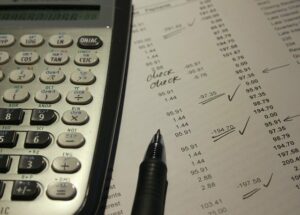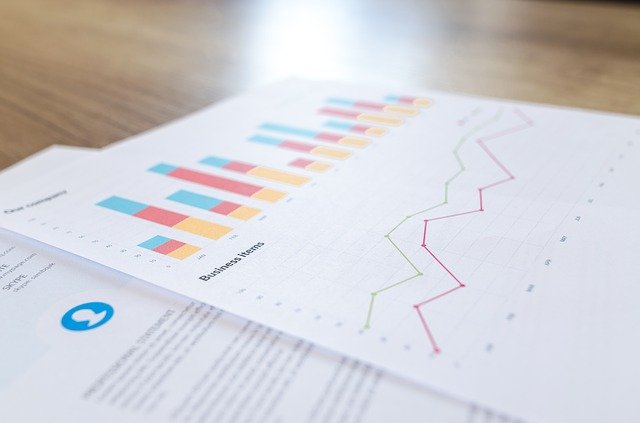There are many facets that go into planning a business. Cash flow is essential for planning optimal times for hiring, renting office spaces, or investing in new equipment. It’s important to have money to fund necessary business expenses without too much money flowing out. Wrestling with cash flow questions like these is important for business owners, especially when the business is growing. Cash flow forecasting helps business owners understand where they stand financially, but not just in the present, but also in the future. It is key to making sound business decisions.
What is Cash Flow Forecasting?
Cash flow forecasting looks at how much cash a business is projected to have over a specific time. Looking at your cash flow data includes your current and past income and expenses. Cash flow data helps you with:
- Identifying when to make capital investments
- Understanding how regular expenses impact your cash flow
- Optimizing processes for invoicing and accounts receivable
- Assessing your business’s busiest and slowest periods
Choose a forecasting period. You can choose a short-term forecast which is usually about 30 days. Medium-term forecasts consider two months to a year. And long-term forecasting looks at one to five years. Please note that longer forecasting periods are less accurate.
Cash Flow Forecast versus Cash Flow Statements
What’s the difference between a cash flow forecast and a statement? The cash flow statement or report contains actual data for previous cash flow (in and out) for your business. The cash flow forecast or projection is an estimate based on the data you’ve collected from your statements and reports.
Purpose of a Cash Flow Forecast
Managing your business often feels like a day-by-day chore. But unless a business establishes working capital, they can’t always achieve strong, sustainable growth. You will not be able to make well-informed decisions or plans to meet your business objectives unless you gain a strong understanding of your financials. What if you need to add a position such as an administrative assistant so you can focus more on serving clients? Your bank account may be okay for right now and you have the cash to pay an extra salary this month. No problem, right? But can you predict if you’ll have the cash levels to pay an assistant next month? What about over the next three or four months?
So, the real question is if your business has the cash flow to support ongoing expenses like hiring new employees. This is where cash flow forecasting is useful. When you understand the big picture of your cash flow and know what you have coming in and going out on a regular basis, you can better discern feasible expenses for your business both now and in the future.

Image by Lucia Grzeskiewicz from Pixabay
How is Cash Flow Calculated?
The key to calculating your cash flow is nailing down all the cash you have coming in and going out. Some examples include:
Cash Inflow
- Paid in full invoices
- Business loans
- Income from rental property
- Government grants
- Sales of assets
Cash Outflow
- Regular expenses and payments (subscriptions, business cell phones, rent, travel, utilities)
- Payments on business loans
- Equipment lease or purchase
- Employee salaries
- Tax payments
Wonder where you can find all this information quickly? Take a look at your financial reports. You’ll find all the numbers you need there.
What Cash Flow Reports do You Need?
There are two reports you’ll need for cash flow forecasting. Your Profit & Loss Report and Cash Flow Report are key to helping you pinpoint your earning and spending patterns. They help you create a cash flow statement that can help you in your decision-making process.
Profit & Loss Report/Statement
Your Profit & Loss report is your biggest asset when you want to calculate and forecast your business’ cash flow. If you use cloud accounting software, you likely already enter paid invoices and expenses. That gives you your figures with just a quick click of a button. It will have your gross profit, expenses, and total net profit all in one place.
- Gross profit: Your gross profit is all your net income minus the cost of goods sold (COGS).
- Expenses: Your expenses include all your bill payments and outgoing money.
When you subtract your total expenses from your gross profit, you’ll have your net profit. Net profit is how much you earned or lost after your expenses.
Cash Flow Report/Cash Flow Statement
A cash flow report gives you a quick snapshot of how much cash you have on hand, and how much money has been entering and leaving the business. The report breaks it all down for you in several sections.
- Starting balance: The total cash you had at the beginning of the reporting period. It’s the sum of your gross cash inflow and gross cash outflow.
- Net Cash Change: Your gross cash inflow minus the Gross Cash outflow
- Ending Balance: Your starting balance plus your net cash change
The ending balance is your net cash flow for the period you are assessing. Once you have done these calculations, look for patterns in your cash flow both in and out. This helps you project cash flow and improve your future cash flow as well.
How do I do my Cash Flow Forecast?
Taking a good look at your P&L provides you with insights into your earning and spending. Be realistic. Take this opportunity to correct any patterns you find troubling or inconsistent. For example, if you notice a negative cash flow in the third quarter for the last three years, you can expect it to be the same this year too. However, once you see this pattern, you can make changes to correct it. Here is an example forecasting process.
Cash Flow Forecasting in Four Steps
Step 1: Choose a period of time for forecasting.
Step 2: Review your cash sources over the last one or two years. Then ask yourself these questions about your forecasting period:
- Will my client base remain the same? Can I expect to work with the same clients in the future?
- Will I need to obtain business loans, sell assets, apply for government grants, or bring in investment income?
- Do I foresee signing long-term contracts with large clients?
Use your cash inflows from earlier years to estimate increases or decreases in your cash receipts.
Step 3: Review your cash outflow over the last year (or two). Ask yourself these questions:
- Do I expect my regular expenses to stay the same?
- Will I purchase assets or pay off any loans?
- Do I expect any other one-time expenses?
You can use your previous operating costs to estimate next year’s cash outflow.
Step 4: Take another look at your cash flow report to see how much cash you have on hand right now. Add all the cash inflows and deduct your outflows for the coming year. This provides you with the closing cash balance for the end of the year. It also is your opening cash balance for the next year.
Cash Flow Forecasting Can Supercharge Your Business
Investing in your company’s financials helps you make smart decisions for your future. You will know more what to expect and tweak behaviors based on your insights. Forecasting helps when you run into problems. Even rapid growth can disrupt your cash flow. Well-documents cash flow forecasts can help you make decisions such as expanding your business space or purchasing new equipment. You’ll know where to put these types of expenses on your business calendar.




